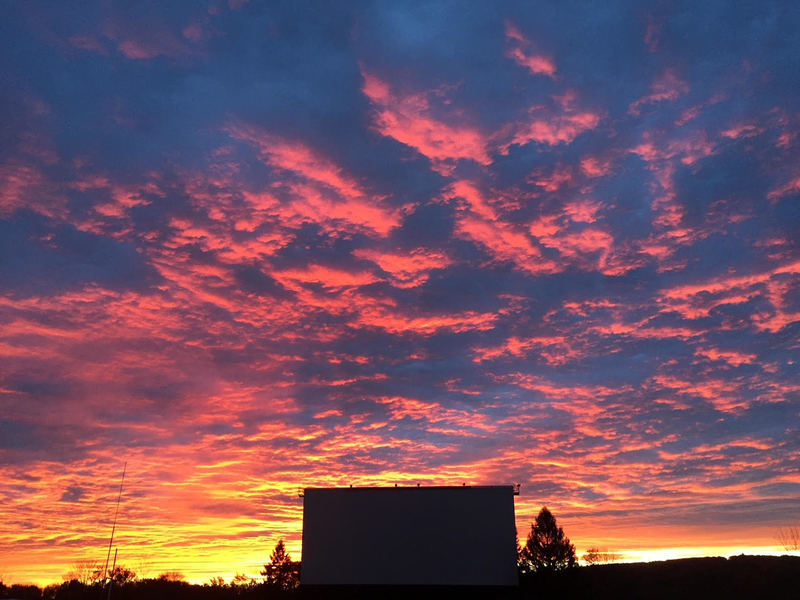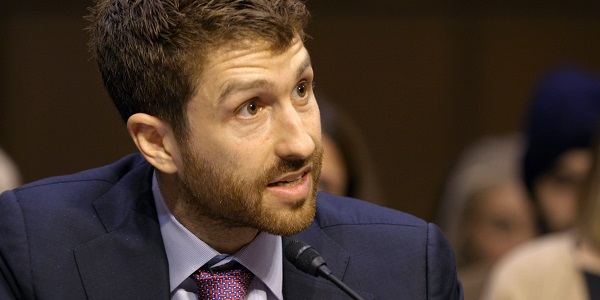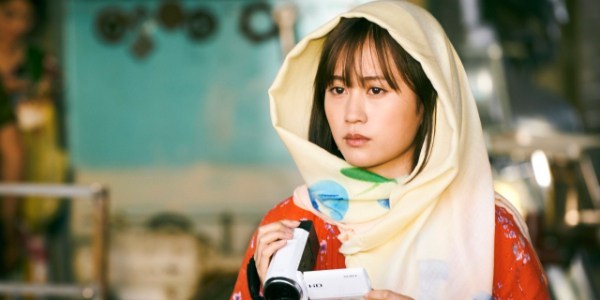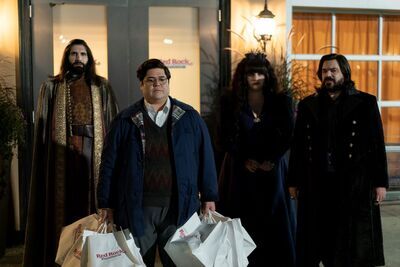How the Drive-In Saved Me in 2020

I first discovered the Mahoning Drive-In theater in the spring of 2016, just as a young filmmaker, Alexander Monnelli, began shooting a documentary about this most unlikely of businesses: A classic drive-in theater which, despite lagging attendance, was determined to continue presenting movies on 35mm. Two years later, now also an employee of this drive-in, I’d see the resulting movie, and myself, on-screen at the Grauman’s Chinese Theatre.
It already feels as if a decade has since passed, so has this year tested me, tested all of us. Before this season began—indeed, even before the full weight of COVID-19 began to bear down on these United States—I made plans to relocate to Lehighton, Pennsylvania, about 15 minutes from this venue where I had intended to continue spending the majority of my weekends for roughly half the year. Two, three and even the occasional four-movie nights would be much easier to enjoy without a dreaded 45-minute or hour-long commute home after the fact. I thought it would be a definite boost to my intended lifestyle; I had no idea just how essential it would be to anchoring me in 2020.
As cases began spiking stateside, and with them, my already-fraught anxiety, I realized that I would no longer be able to work at a public-facing venue and made the difficult decision to tender my resignation. I was nearly paralyzed by fear from COVID, but I also wanted to be able to watch the movies, unimpeded by the demands of a second job. Depression is something I’ve wrestled with for decades, and the reality of lockdown during a pandemic was not something I was about to take lightly from a mental health standpoint.
Thank goodness that I was fortunate enough to live essentially next door to a drive-in, and one showing an incredible diversity of assorted classics and genre titles on actual film. Otherwise, I’d have likely been spending my spare time handwringing and doom scrolling. With a handful of exceptions, I attended every show, from the traditional opening weekend double bill of “The Wizard of Oz” and “Willy Wonka and the Chocolate Factory” to the predictably groovy Bruce Campbell weekend (pictured above, I’m the guy in the frog shirt), to the sold-out screening of “Mean Girls” (not to brag but that was my idea). To sweeten the deal, I had two other drive-ins nearly as close, Becky’s, and Shankweiler’s, where I saw numerous other favorites (“The Blues Brothers,” “The Empire Strikes Back,” “Pee-wee’s Big Adventure” among them), or the not-too-terribly-far Point Drive-In, where I finally corrected my 2014 oversight and saw Gareth Edward’s magisterial “Godzilla” at a drive-in, on a screen that, just weeks later, would be torn apart in a storm.
I was blessed all-around: my job was essential and had already been remote for years, although that didn’t stop the world from feeling like it was spinning apart as the death toll began to mount and people I’d once thought better of shrugged it off as either a necessary sacrifice or fake news. My work and my spare time achieved what felt most necessary, aside from safety: filling the time. My very particular approach to the drive-in also helped with much-needed structure. Every Friday and Saturday, plus many Tuesdays, Thursdays, and Sundays, I had my gear packed like a Boy Scout prepping for camp: water, health snacks, changes of clothes, pillows, and other necessary gear for as comfortable and streamlined an experience as possible.

When I arrived on site, always parked in the front row, I would install the cardboard shades I’d cut and trimmed to match the inside of my car doors’ windows. One thing I don’t miss about going to see movies at indoor theaters is the rudeness of audiences, but that doesn’t entirely go away at the drive-in, either; plenty of people text during the shows while sitting the front row, or distractingly take photos and videos of the movies themselves. It’s depressing how often an iconic moment transpires onscreen, only to be accompanied by a flurry of camera flashes, but I’ve gotten used to it. Cocooned in my Prius, with carefully placed pillows blocking the inevitable headlights shining from the rear, blankets on the dashboard blocking the light from my car radio, I was able to lock in to the movies better than I’d ever before experienced, and as regards to clues of my being on the spectrum, as Hannah Gadsby might put it, I “Hansel and Greteled the f**k out of it.”
The movies themselves didn’t merely provide distraction, but enrichment, and insights. More than that, though, they mirrored and even seemed to comment on reality in ways that were continually revelatory. A newly conceived Tuesday-night series dubbed “Tunnel-Vision Tuesdays” highlighted a variety of excellent genre titles, and what better movie to begin such a series during a pandemic than Lamberto Bava’s “Demons,” arguably the ultimate getting-infected-at-the-movies movie. I was tickled to discover that the first reel change of this horror classic falls precisely when the film projector showing the movie-within-the-movie is destroyed.
Other cases were often politically salient, such as the screening of “Hard to Die” just after the news of Ruth Bader Ginsberg’s death broke. Joe Dante’s “Explorers,” unseen by me beforehand, gave me an image of social breakdown I didn’t know I needed: a Rob Bottin alien doing Ed Sullivan impressions in front of an Ozymandias backdrop. George Romero’s “Night of the Living Dead”—a movie in which a shouting, infantile man in an apparently loveless marriage insists on doing things his way, endangering everyone in the process—played the same Tuesday as the first presidential debate. Projected from an original print on infamously cheap stock, the diminished visual quality, paired with that night’s encroaching thunderstorm, added to the menace; the black parts of the image emanated a halo-like shadow effect, as if they were themselves infected by the very radiation that resurrected the film’s ghouls in the first place. The rain began about halfway through the picture, escalating into full-on downpour by the climax, perfectly paralleling the tension onscreen.
The well-handled safety procedures enacted by the theater slowly eased my nerves over the summer. I could even comfortably enjoy the wrestling matches put on there by the Lehigh Valley Wrestling Club for Reel Rumble Weekend, which more than compensated for my disappointment that that weekend’s secret feature was not, in fact, Santo Gold’s “Blood Circus.” Eventually, I found myself comfortable enough to leave my car more regularly, ultimately volunteering behind the scenes again between and after movies. The staff particularly appreciated my knack for properly organizing soda cans in the limited refrigerator space, and I hadn’t realized how much I’d missed pitching in.
Being comfortable with letting my guard down was key to what proved to be the highlight of the season: a Tuesday-night showing of “Assault on Precinct 13,” one of my very favorites. When it had last played there, in July 2016, it was just weeks after the horrible shootings that had occurred in Dallas, and Austin Stoker’s line “They gunned down five police officers!” felt like a bolt from the heavens, the Hawksian dialogue echoing off of the surrounding mountains that early morning. It was the best single viewing experience I’d had there, before this year.
You see, “Assault on Precinct 13” isn’t just one of my favorites, but it was one of my brother’s, too. It was the last movie we watched together before he died suddenly a little less than a month after his 25th birthday. He fell asleep towards the end. Back in 2016, he’d intended to see it at the drive-in with me, but he had to bail early. Maybe the third time’s the charm. That night, I felt a presence, and decided to clean up my car—well, the front passenger seat—as if someone else were going to be there with me.
My brother was a bit of a trickster, and my dad’s girlfriend is of the opinion that when something goes wrong—a car alarm goes off unexpectedly, say—that’s Alex making his presence known. That night, something went wrong. The film stopped, in a manner quite unlike any of the film breaks or burns or projection snafus I’d seen there before. The movie started back up just a moment later, and it was as if electricity was in the air. It was all the time I needed to know that he was there with me.
Overtaken by the experience, it was only later that I realized the significance of the moment itself where the movie had stopped. At this point, the main characters, inside an old police station, are under siege, but they don’t know it yet, and when the phone lines go out, a veteran cop exits the building to use his car radio. He’s killed by gunfire by a gang, but they’re using silencers, and no one hears a thing. A secretary remarks, “Chaney just fell down.” When my brother died, his heart gave out, for reasons the autopsy couldn’t identify. He … just fell down.
Near the end of the season, several employees left unexpectedly, including the co-projectionist, and if I learned anything this past year, it was to take advantage of opportunities when I saw them. I hadn’t projected film in seven years, and I missed doing so terribly, and barring any irregularities, I’ll be doing so again next year. The final weekend of the year was sublime: I got to see “Halloween” on Halloween, I gave a (Hershey’s) kiss to Tom Savini at the request of a friend, and I got to assist with changeovers on “The Texas Chainsaw Massacre 2.” While memes from the end of the first film abounded online after the election was finally called the following week, it’s the end of Tobe Hooper’s sequel that most encapsulated my experience of this most dreadful election cycle: Caroline Williams, injured but victorious, twirling in exaltation with her weapon, surely aware of the struggle that still lies ahead.





